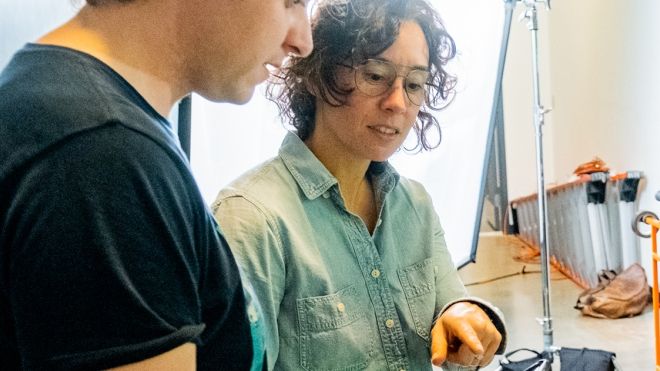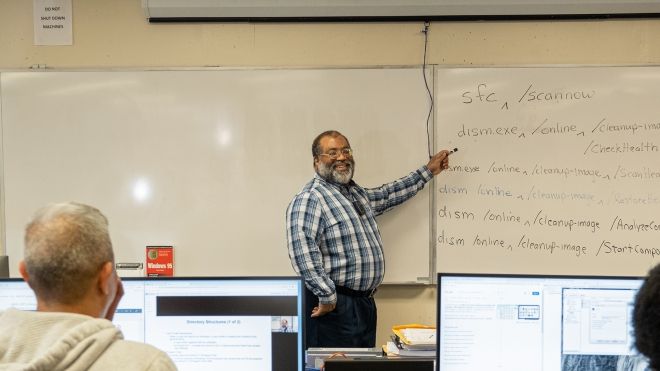By Christina Henry
Published Feb 24, 2022
When Victoria A. Newsom, PhD, and Lara Martin Lengel, PhD, began work in 2015 on a collection of scholarly essays explaining “embodied activism,” they could not have envisioned what lay ahead.
Between then and publication of the book in January 2022, political and social tides led to a widespread surge in activism manifested in events such as the 2017 Women’s March, the 2018 student walkouts to protest gun violence, and global climate activism. In 2020, as the COVID-19 pandemic exposed layers of inequities nation by nation, the murder of George Floyd accelerated the #BlackLivesMatter movement igniting worldwide protests. Activism from both ends of the political spectrum continues as the pandemic drags on and tensions in countries around the world are increasingly inflamed.
Newsom, a professor of Communication Studies at Olympic College, and Lengel, a professor in the School of Media and Communication at Bowling Green State University, have collaborated for nearly 20 years on scores of articles about gender, communication and human rights. Their
The collection of writings in “Embodied Activism” was chosen through a rigorous peer review process by an independent panel the authors convened. The voices are diverse, the methods interdisciplinary. Submissions numbered “four times as many” as they expected. “That's how much activism is happening in the world right now,” Newsom said.
Newsom and Lengel show how the phenomenon they call “embodied activism” exists throughout history and across cultures.
One example cited is Viola Fletcher, a survivor of the Tulsa, Okla. Massacre. In 2021, Fletcher, then 107, testified before a subcommittee of the U.S. House of Representatives about the horrors she witnessed as a young girl when a white mob laid waste to an affluent African American community and killed an estimated 300 of its residents.
Bearing witness, Fletcher brought her identity as a Black woman more than a century old to bear on a society that had until recently erased the massacre from collective memory.
“Identity resides in the body. Struggle lies in the body. Trauma persists in the body,” the authors write. “Embodied activisms, therefore, are advocative and direct actions taken to disrupt body-based systemic inequalities and encourage power shifts within institutional norms.”
Other examples from history include the bus boycotts and lunch counter sit-ins of the Civil Rights era.
Fast-forward to May 25, 2020, when then-17-year-old Darnella Frazier used her cell phone to document the murder of George Floyd at the hands of a Minneapolis police officer, who has since been convicted.
“Our overall goals in the book were to increase understanding of how activism, political agency and embodiment are all interrelated,” Newsom said. “I don't think we could have published it at a more appropriate time.”
The authors believe their book addresses a research gap regarding embodiment within activism. “Current and historical discussions of activism have been limited by their framing of embodied experience as an aspect or component of activism rather than investigating how bodies are directly and indirectly impacted by advocating practices,” they write.
Other types of embodied activism can include “performative” artistic endeavors, such as music, theater and street art that challenge the status quo and raise consciousness.
Embodied activism can use silence to make a statement, such as the Day of Silence activist campaign, organized by GLSEN (formerly known as the Gay, Lesbian & Straight Education Network).
“These are protests about bodies by bodies,” Newsom said. “And it's about how bodies are placed in all of these political and institutional structures, and how the structural inequities are shifting bodies around, empowering some and making it a lot harder for others.”
Invisible activist bodies work either literally or figuratively unseen to enact disruption from within systems. Examples would be activists of the Underground Railroad in liberating enslaved people, and current-day activists’ relief efforts in Rwanda, Myanmar and other areas of violent unrest.
Embodied activism often comes with risk. One of the book’s contributors, Sarah Cathryn Majed Dweik, a Palestinian and PhD student at Pennsylvania State University, describes the 2018 Nakba, the Palestinian day of remembrance for the lost homeland. That year, mourning transformed to resistance and a symbol of hope for the future. Palestinians planted tents on the border between Gaza and Israel in non-violent protest. But violence erupted between the two sides leading to injuries and deaths.
Newsom and Lengel argue for embodied activism that is both “intersectional and intergenerational,” uniting causes to amplify empowerment.
Desiree A. Montenegro, a former student of Newsom’s and a faculty member at Palo Verde College, contributed to sections co-written by the authors.
“Embodied Activisms” is dedicated “to the activists who put their bodies on the line each day to make the world a better place.”
“I hope it inspires more people to get involved in activism and doing direct embodied activism,” Newsom said. “I have a lot of optimism that more and more people are getting involved. I honestly think that the pandemic has had a positive impact in that way. Because it's made embodied realities visible in ways that people didn't realize. And it's given us kind of a global shared sense of challenge.”

Victoria A. Newsom is a professor of Communication Studies and affiliate faculty in Social Justice and Diversity at Olympic College. In addition to her research on gender, power and identity, she participates in Democratizing Education projects to help reduce costs for college and university students through open-source publications and accessibility of materials. She is working on her second book, “Contained Empowerment: The Liminal Nature of Contemporary Feminisms and Activisms.”
“Embodied Activisms: Performative Expressions of Political and Social Action” is available on Amazon.com and through Rowman & Littlefield, rowman.com.


